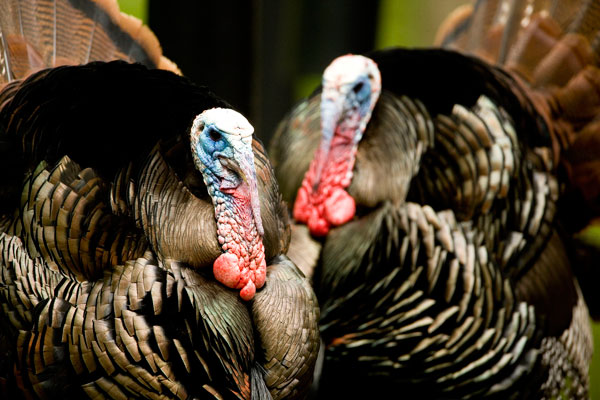
By Dan Zarlenga, Missouri Department of Conservation
Most everyone anticipates a turkey on their table at Thanksgiving. The holiday wouldn’t be complete without it. But did you know wild turkeys are a common resident in Missouri’s forests and fields too? And according to Benjamin Franklin, they could have helped win the Revolutionary War.
Turkeys were once so common and popular in the Americas that our founding fathers considered making a turkey the mascot of the new United States. Legend says it was Benjamin Franklin himself who suggested the turkey be the one to represent the new country. In reality, this was the 18th Century equivalent of “fake news”, since Franklin never officially sponsored the bird. As we all know, it was the bald eagle that ultimately became the official emblem of the U.S. in 1782.
Ben Franklin was certainly a big fan of the turkey though, calling it a “true original native of America” in a letter to his daughter. He added that it was a bird of courage that “would not hesitate to attack a grenadier of the British Guards who should presume to invade his farm yard with a red coat on.”
The wild turkey certainly does have a few characteristics that might help it challenge an invading redcoat. They’re big and powerful birds that can stand up to three feet tall. Turkeys have long legs that give them speed and broad, strong wings that make them swift flyers . . . at least for short distances. Unfortunately, they don’t have the stamina for long-distance flying.
They might out-compete a red-coated British soldier in stylish flair too. Turkeys bristle with over 5,000 brown feathers that flourish an intricate pattern of black bars. Their iridescent plumage also reflects a rainbow of hues, including bronze, green, gold, and blue. In fact, turkeys (especially males) can sport all the colors of the American flag—red, white and blue—on their heads, waddles and throats.
Wild turkeys forage by scratching in the leaves for acorns, which is a primary food, especially in winter. Depending on the time of year, turkeys might make grass seeds, dogwood fruits, wild grapes, corn, oats, and wheat part of the menu. The young eat mostly insects for the protein to fuel their rapid growth.
Male turkeys are famous for their elaborate strutting and gobbling displays to attract females for mating in spring. After mating, females make shallow nests on the ground where they lay about 10–14 eggs. After one month of incubation, a new generation of turkeys is ready to hatch.
All things considered, the wild turkey may not really have won the Revolutionary War for us, but it certainly has won a place in our Thanksgiving traditions. And it plays an important role as part of Missouri’s wildlife.
Visit www.mdc.mo.gov.


